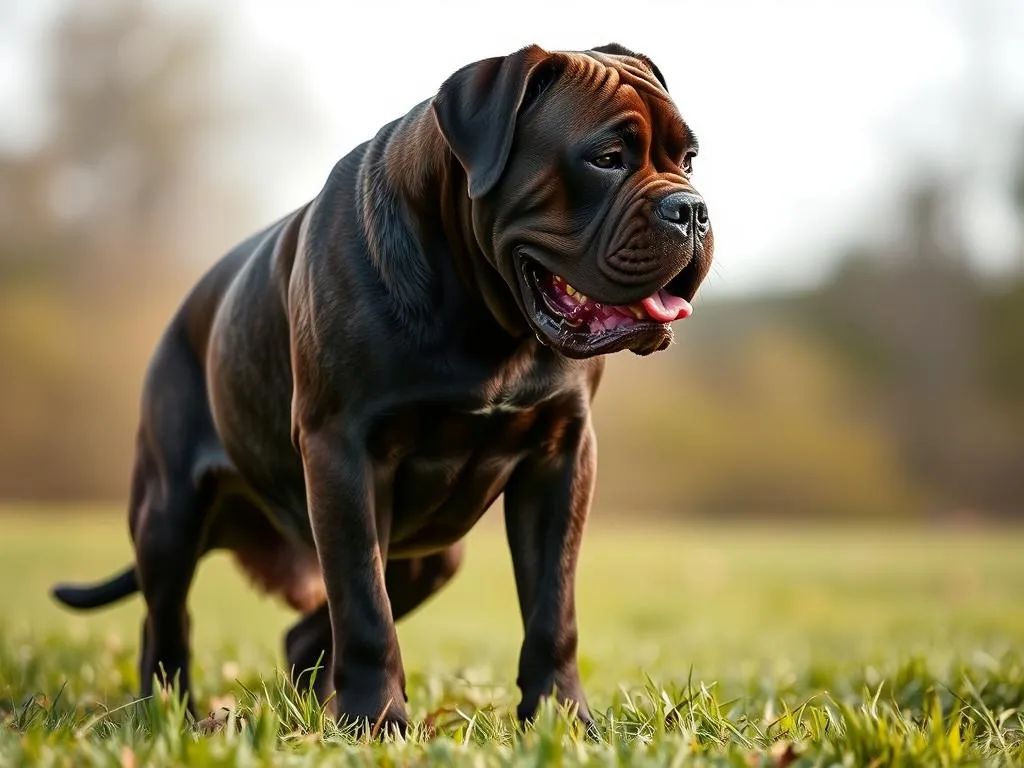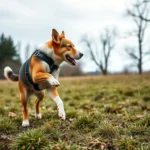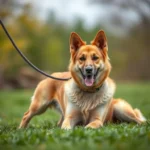
Introduction
The Cane Corso, a majestic and powerful breed, is known for its loyalty, intelligence, and protective nature. With their large size and strong build, these dogs are not just physically impressive but also require a dedicated training approach, especially when it comes to potty training. How to potty train a Cane Corso is a common query among new owners, as establishing good habits early on can lead to a well-behaved companion.
In this comprehensive guide, we will explore the essential techniques and tips for successfully potty training your Cane Corso, whether they are a puppy or an adult dog. From understanding the breed’s characteristics to recognizing the signs that your dog needs to go, we will cover everything you need to know for a successful potty training journey.
Understanding the Cane Corso
Breed Characteristics
The Cane Corso is a large breed, typically weighing between 90 to 120 pounds and standing about 24 to 28 inches tall at the shoulder. This breed’s imposing stature combined with a confident demeanor makes them excellent guardians. However, their size also means that potty training can be a bit more challenging compared to smaller breeds.
In terms of temperament, Cane Corsos are known for their loyalty and intelligence. They can be independent and stubborn, which may pose challenges during training. Understanding these traits is crucial for an effective potty training approach.
Common Challenges in Potty Training
One of the main challenges in how to potty train a Cane Corso is their stubbornness. They may not respond immediately to commands, requiring patience and persistence. Additionally, Cane Corsos can be sensitive to changes in their environment, which might lead to accidents if they feel stressed or anxious. Being aware of these potential issues will help you tailor your training methods to suit your dog’s needs.
Preparing for Potty Training
Essential Supplies
Before starting the potty training process, gathering the right supplies is essential. Here’s what you’ll need:
- Potty Pads: These can be useful, especially for indoor training, providing a designated area for your dog to relieve itself.
- Crate: A crate is an invaluable tool for potty training. Choose a crate that is large enough for your Cane Corso to stand up, turn around, and lie down comfortably, but not so large that they can use one corner as a bathroom.
- Cleaning Supplies: Accidents will happen, so it’s vital to have enzymatic cleaners on hand to eliminate odors and prevent your dog from returning to the same spot.
Setting Up a Designated Potty Area
Choosing the right outdoor space for your Cane Corso’s potty area is crucial. Look for a spot that is quiet and free from distractions. Consistency in location will help your dog understand where they are expected to go. Always take them to the same spot, as this reinforces the behavior you want to encourage.
Potty Training Techniques
Establishing a Routine
Establishing a consistent schedule is key in how to potty train a Cane Corso. Dogs thrive on routine, so take your dog out at the same times each day, such as first thing in the morning, after meals, and before bedtime. Puppies typically need to go out more frequently, so be mindful of their age and activity level when determining break intervals.
Positive Reinforcement Strategies
Positive reinforcement is one of the most effective training methods. Use treats and praise to reward your Cane Corso immediately after they successfully go potty outside. Timing is crucial; rewards should come right after the behavior to create a strong association. For example, if your dog relieves itself in the designated area, offer a treat and enthusiastic praise right away.
Crate Training as a Tool
Crate training can be an effective method for teaching your Cane Corso where to go. Dogs naturally avoid soiling their sleeping area, so using a crate can help them hold it until they are let outside. However, it’s important to understand crate limits; puppies can only stay in a crate for short periods based on their age. As a general guideline, a puppy can hold it for about one hour for each month of age plus one hour.
Recognizing Signs That Your Cane Corso Needs to Go
Behavioral Indicators
Cane Corsos exhibit certain behaviors when they need to relieve themselves. Look for signs such as sniffing around, circling, or whining. If you notice these behaviors, promptly take your dog outside to their designated potty area.
Timing Indicators
Monitoring your dog’s routine can also help you predict when they need to go out. Generally, dogs will need to relieve themselves shortly after eating, drinking, or waking from a nap. Keeping an eye on their activities can help you anticipate their needs and prevent accidents.
Dealing with Accidents
Staying Calm and Collected
Accidents are a natural part of the potty training process, and it’s essential to stay calm. Never punish your Cane Corso for accidents; this can create anxiety and worsen the problem. Instead, clean up the mess without making a fuss, and focus on reinforcing the desired behavior.
Cleaning Up Properly
To effectively clean up after accidents, use enzymatic cleaners designed for pet messes. These products break down the odor-causing substances, ensuring that your dog won’t be tempted to return to the same spot. Make sure to follow the instructions on the cleaner for the best results, ensuring no lingering scents remain.
Maintaining Progress and Overcoming Challenges
Common Setbacks and Solutions
Even with the best intentions, setbacks in potty training can occur. A Cane Corso may regress after initial success due to environmental changes, such as moving to a new home or the arrival of a new family member. If this happens, return to basic training routines and reinforce positive behavior without frustration.
Ongoing Reinforcement and Consistency
Consistency is crucial in maintaining progress. Continue to reward good behavior and keep up the potty training routine, even after your Cane Corso has learned the basics. Setting long-term potty training goals can help you stay focused and ensure that your dog remains well-trained throughout their life.
When to Seek Professional Help
Signs That You May Need a Trainer
If you find that your Cane Corso is having persistent accidents despite your best training efforts, it may be time to seek professional help. Additionally, if behavioral issues, such as aggression or extreme anxiety, are affecting potty training, a professional trainer can provide valuable guidance.
Finding the Right Professional
When searching for a dog trainer, consider their experience with large breeds and their training philosophy. Look for trainers who use positive reinforcement techniques, as these methods are generally more effective and humane. Don’t hesitate to ask potential trainers about their approaches and any success stories they can share.
Conclusion
Potty training a Cane Corso requires patience, consistency, and understanding of the breed’s unique characteristics. By establishing a routine, using positive reinforcement, and recognizing your dog’s needs, you can successfully teach them the appropriate places to relieve themselves. Remember that accidents are part of the process, and staying calm and collected will help you maintain a positive training environment.
As you embark on your potty training journey, keep in mind that every dog is different. What works for one Cane Corso may not work for another, so be flexible and willing to adapt your methods. With dedication and the right techniques, your Cane Corso will become a well-mannered companion in no time.
FAQs
Common Questions About Potty Training Cane Corso Puppies
Q: How long does it typically take to potty train a Cane Corso puppy?
A: The time it takes can vary, but with consistent training, most puppies can learn within a few weeks to a few months.
Q: Should I use potty pads for my Cane Corso?
A: Potty pads can be helpful for indoor training, especially for puppies. However, transitioning them to outdoor potty breaks should be the ultimate goal.
Tips for Potty Training Adult Cane Corsos
Q: Is it harder to potty train an adult Cane Corso?
A: It may take longer due to established habits, but with patience and consistent training, it is certainly possible.
Addressing Specific Behavioral Concerns Related to Potty Training
Q: My Cane Corso seems anxious when I take them outside. What should I do?
A: Gradually acclimate your dog to the outdoor environment. Start with short trips and gradually increase the duration, rewarding them for positive behavior.









